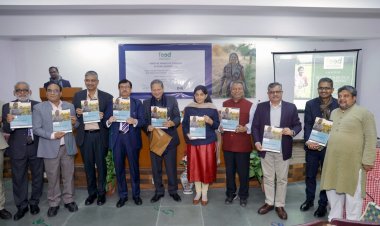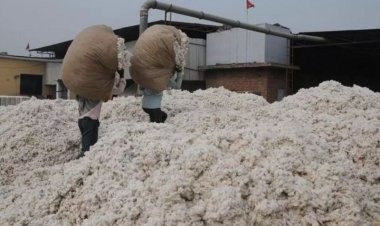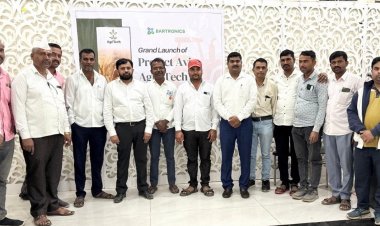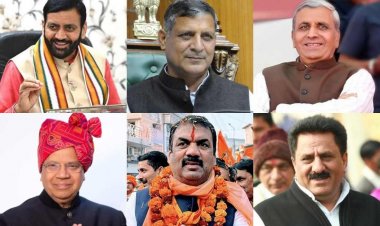Farmers’ movement brings government’s fertilizer subsidy reforms wagon to a halt
When an extra allocation of Rs 65,000 crore rupees for fertilizer subsidy was sanctioned by the central government, speculation was rife that the government was preparing to bring about fertilizer subsidy reforms. But it seems the implementation of fertilizer subsidy reforms has now come to a halt. More than 100 days old now, the ongoing farmers’ movement against the three central laws is considered to be the biggest reason behind this.
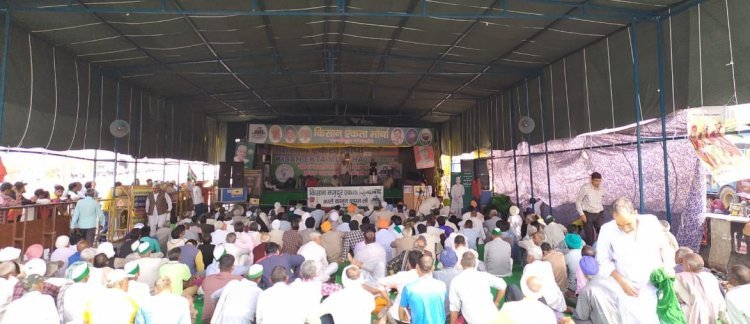
When an extra allocation of Rs 65,000 crore rupees for fertilizer subsidy was sanctioned by the central government just before the Budget, speculation was rife that the government was preparing to bring about fertilizer subsidy reforms. For long, the government has been making efforts to bring about a change in the process of granting subsidies on fertilizers, especially that on urea, and bring it under the Direct Benefit Transfer (DBT) regime for the farmers. The first purpose of this exercise is said to be to restrict subsidies only to the needy and the second is to promote the balanced use of fertilizers by reducing the use of urea (nitrogenous fertilizer). But, in spite of all preparations, the implementation of fertilizer subsidy reforms has come to a halt. More than 100 days old now, the ongoing farmers’ movement against the three central laws is considered to be the biggest reason behind this. The government does not want to incur the wrath of farmers on any new issue. The fertilizer subsidy reforms most significantly include the provision of a phased increase of urea prices. But given the bitter experience of the people with regard to DBT on Liquid Petroleum Gas (LPG), farmers have a reason to protest the DBT regime in fertilizer subsidies somewhat similar to the example of Bihar cited by the agitating farmers in the case of agricultural marketing reforms. In Bihar, the Agricultural Produce Market Committee (APMC) Act was repealed in 2006, leading to a collapse of the mandi system.
Last year in August and September, the government had sought the advice of a few farmer organizations in order to prepare for implementing the fertilizer subsidy reforms. Several persons involved in this discussion told RuralVoice about their participation in such meetings. But nothing is astir on this issue at present, thanks to the farmers’ movement against the three farm reform laws in a large part of the country.
The government has taken several steps as part of the strategy to prepare the ground for the new regime. Imposing a monthly ceiling on the number of urea bags to be sold to a farmer is part of this strategy. Initially, a purchase ceiling of 100 bags was imposed. Later on, this ceiling was lowered further to 50 bags. However, there was no limit to the number of times a farmer could buy urea bags. The ceiling had come down to five bags in several districts. Sources in the fertilizer industry say that this step had been taken by the local administration in order to check the scarcity of urea.
Meanwhile, a significant trend of decline in fertilizer sales has emerged, according to which fertilizer sales have been continuously going down since August 2020. The only month that was an exception to this trend was October 2020. In August 2020, fertilizer sales stood at 69.26 lakh tonnes (lt) while a year ago, in August 2019, the figure was 76.23 lt. The fertilizer sales in September 2020 were 47.34 lt in comparison to 53.26 lt in September 2019. The decline in fertilizer sales continued in the months of November and December in 2020 and January and February in 2021. The purchase ceiling imposed by the government on fertilizer bags is being considered to be a major reason for this. Another reason why a purchase ceiling was imposed by the government on urea bags was to identify the top 20 urea buyers in every district. However, according to sources in the industry, fertilizer sales have been 51 lt more than those last year. This includes an increase of 20 lt in urea sales, 20 lt in NPK and 11 lt in DAP.
The Revised Estimates (RE) for the current year (2020-21) stand at Rs 94,957 crores for urea subsidy while the budgetary provision was Rs 47,805 crores. It was due to this that the government had sanctioned an additional subsidy of Rs 65,000 crores just days before the Budget. The budgetary provision for the next financial year (2021-22) has been kept at Rs 58,768 crores for urea subsidy. Also, the budgetary provision made for nutrient-based subsidy (NBS) is Rs 20,762 crores while its RE for the current year stands at Rs 38,990 crores.
In order to prepare the ground for the process of reforms, the government has also made changes in the process of granting subsidies to fertilizer-producing companies. These companies, until recently, were granted subsidy on the basis of information regarding their bagged material dispatched and received at a railhead point or the district’s godown. But now subsidy is being calculated on the basis of data gathered from the point-of-sale (PoS) machines. Thus, the subsidy is being granted on the basis of the quantity of fertilizers sold by the retailer to the farmers.
The advantage of this move of the government has been that the data of the farmers buying subsidized fertilizers is reaching the government. That is, a database is being prepared, as it were. It will be easy to transfer the amount of subsidy directly to the farmers’ accounts on the basis of this data. Besides, the accounts used by the government to transfer Pradhan Mantri Kisan Samman Nidhi (PM-KISAN) funds may also prove effective for the process of granting direct subsidy. In order to grant direct subsidy, industry experts and government officials believe, the amount of subsidy may be uploaded in the credit card of the farmers. When the farmer goes to buy fertilizer, the subsidy amount may be adjusted from the card by the PoS machine. The farmer may then pay to the fertilizer seller only the amount that remains after adjusting the subsidy.
However, there are several loopholes in the scheme of granting direct subsidy to the farmers. For instance, the fertilizer requirement of the farmers is determined on the basis of crops, regions, and irrigated and non-irrigated land. Given these complex criteria, if the subsidy to farmers is fixed on a per-acre basis, how will the requirement of fertilizers be determined? Besides, there are a large number of tenant farmers in India who do not have any documentary proof. How will these farmers get the subsidy benefit? The move to fix subsidy on the basis of land ownership may prove to be unpragmatic.
Another problem is that it will be difficult for the farmers if, as in the case of LPG subsidy, the amount of subsidy is credited to the farmer’s account after he has purchased the fertilizer at its maximum retail price (MRP), because one wonders if most of the farmers will have money enough to pay the full price at the time of purchase.
Besides, officials of farmer organizations say, it is not clear whether the fertilizer subsidy granted by the government will be based on international prices or on the production cost of urea companies. The prices of feedstock are very significant in determining this. If the price of feedstock reduces, what is the guarantee that the government will not reduce the fertilizer subsidy? We have seen how LPG subsidies were reduced when crude oil prices went down in the international market but were not increased again when the prices went up, consequently making the consumer suffer by paying high prices. Who will assure that fertilizer subsidy will not meet a similar fate? The feeling one gets is that the government is in fact trying to curb the subsidy bill. If the government thinks otherwise, it will have to clarify its subsidy policy and state categorically that this has nothing to do with fiscal management. Even otherwise, the LPG subsidy issue has become a political one. Which is why we get to hear in the West Bengal elections: “Before the election he said Ujjwala and after the election all is jumla (just a phrase).”
As far as the government’s fertilizer subsidy reforms are concerned, there has to be a phased increase in urea prices and a reduction in the prices of fertilizers that come under NBS. The purpose is to promote the balanced use of fertilizers.
But, as of now, it seems the government’s plans of reforms on the fertilizer subsidy front have been put on the back burner because its apprehension is that any move in this regard may serve as a new opportunity for protest by the farmers. That is why even the officials of the Department of Fertilizers, which has long been working on the scheme of transferring the fertilizer subsidy directly to the farmers’ accounts, are sending similar signals.



 Join the RuralVoice whatsapp group
Join the RuralVoice whatsapp group


















